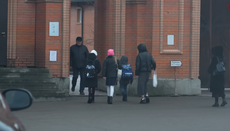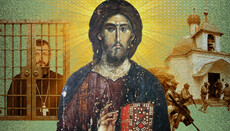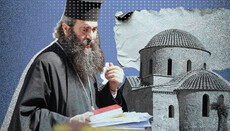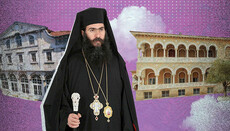What is happening to the Armenian Church – and why?
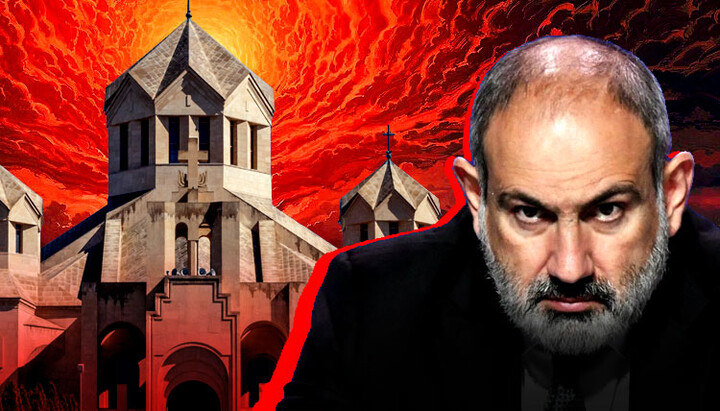
The Prime Minister of Armenia has called the leadership of the Armenian Church "antichristian," accused it of debauchery, and announced plans to overthrow the Catholicos. What is going on?
On July 20, 2025, Armenian Prime Minister Nikol Pashinyan announced plans for a mass rally aimed at removing Catholicos of All Armenians Karekin II from office.
“Undesirable, painful, but logical: when a married couple can no longer uphold their covenant, they divorce. The same must happen with the Church. Ktrich Nersisyan must vacate the Veharan,” Pashinyan wrote, referring to the Catholicos by his secular name, accusing him of violating monastic vows and demanding that he leave the Church residence.
This is merely the tip of the iceberg. The conflict between the Armenian government and the Church has been brewing for years. But why does the state now feel empowered to take such drastic steps?
Let us begin with some background. The Armenian Apostolic Church (AAC) is one of the oldest Christian churches in the world, believed to have been founded by the Apostles Bartholomew and Thaddeus. Armenia is traditionally recognized as the first country to adopt Christianity as its state religion in 301 AD.
However, in 451 AD, the Council of Chalcedon convened, which the Armenian Church did not accept. As a result, it is classified among the so-called non-Chalcedonian or Oriental Orthodox Churches. Numerous attempts to restore communion with the Byzantine or Roman Churches have failed – not so much for theological reasons as for political ones. Today, the AAC is the national church of the Armenian people. As the Armenian Constitution declares: “The Republic of Armenia recognizes the exclusive mission of the Armenian Apostolic Holy Church as the national church in the spiritual life of the Armenian people.” This, arguably, lies at the root of the Church’s current troubles – though not only in Armenia, and not only today.
A long-brewing conflict
The current clash between Armenia’s political and religious authorities began in 2020, amidst the war in Nagorno-Karabakh. But the roots reach back to 2018, when Pashinyan came to power following Armenia’s so-called “Velvet Revolution.” At that time, activists close to the new government popularized the slogan: “A new Armenia needs a new spiritual leader” – a clear jab at the Church hierarchy.
In 2020, the Second Nagorno-Karabakh War ended with Armenia’s effective defeat and the handover of vast territories to Azerbaijan. Catholicos Karekin II (secular name: Ktrich Nersisyan) publicly called for Pashinyan’s resignation.
Let us not judge who was “right” – the Catholicos, expressing the grief of a people unwilling to accept defeat, or Pashinyan, who was forced to sign an unfavorable peace under duress. The question is: could the Apostles, preaching the Gospel, ever have called for political change or involved themselves in secular governance? National churches, however, do precisely that. In fact, they often must – as voices of the people, they reflect the nation’s hopes and struggles.
Although many predicted Pashinyan’s political career would end in 2020, he won reelection in June 2021. Meanwhile, tensions in Karabakh continued. Pashinyan acknowledged Azerbaijan’s sovereignty over the region but insisted on securing the rights of the Armenian population.
In April 2023, Catholicos Karekin again demanded Pashinyan’s resignation, warning of “unacceptable statements” regarding Karabakh’s status and deepening societal division. Once more, the Church leader took a political stance – not a Gospel-based moral judgment, but an explicitly political statement. Pashinyan responded: “If the Church wants to engage in politics, Armenia is a democratic country – they can form a political party.”
Then came the final blow. On September 19–20, 2023, Azerbaijani forces launched a swift military operation, seizing full control of Nagorno-Karabakh. The president of the former republic signed a decree dissolving it, and nearly all of the region’s Armenian population fled to Armenia.
Tensions escalate
In April 2024, Pashinyan ceded four villages in the Tavush region to Azerbaijan. This sparked the “Tavush for the Homeland” protest movement, later renamed “Sacred Struggle,” led by Archbishop Bagrat Galstanyan of the AAC. Again, we ask: Can a Christian hierarch lead such a movement, especially one described as a “sacred war”? In a national church context, it appears not only possible but, under some conditions, inevitable.
Pashinyan saw the movement as a threat to his power and accused the clergy of being “agents of influence.” His fears were not unfounded. In May 2024, Archbishop Bagrat led a massive march to Yerevan, was nominated for prime minister by supporters, and publicly urged Pashinyan to step down “peacefully and without upheaval.” The resignation never occurred.
In 2025, the conflict reached shocking proportions. On May 29, Pashinyan claimed during a government meeting that most churches in Armenia were “used as storage rooms and filled with garbage.” Bishop Arshak Khachatryan oddly thanked him for “caring” about Armenian sacred sites. But Pashinyan’s agenda soon became clearer.
The following day, he stunned the nation with a vulgar personal attack on Catholicos Karekin II: “Your Holiness, go on and keep f***ing your uncle’s wife. What business do you have meddling with mine?”
At first, many assumed it was a fake. But Pashinyan followed up with another post: “Should we not consider how many of our bishops are actually keeping their vows of celibacy?”
He then published four more posts accusing AAC clergy of violating celibacy and called for state control over the selection of the Catholicos, demanding that candidates undergo a “moral vetting process.”
On the next day, Pashinyan’s wife, Anna Hakobyan, joined the campaign, calling Karekin II the country’s “chief spiritual mafioso” and accusing Church leadership of pedophilia and abuse.
“The nation’s leading pedophiles have been demonized by the word ‘storage room.’ Rightly so, because it’s in storage rooms where the black-robed maniacs commit perversions that don't even earn the indignation of believers – who’ve long grown numb and continue carrying these perverts on their backs,” she wrote.
No evidence has since been presented to support any of these grave accusations. But the tactic is obvious: if such abuse scandals could happen in the Catholic Church, why not in the Armenian Church? Some will believe – and many do.
Notably, Pashinyan has not attacked the AAC’s doctrine or forced it to take certain religious actions. Rather, he claims to be targeting corrupt clergy – because he sees them as political opponents and threats to his authority. And political enemies, in his playbook, are fought with slander, coercion, bribery, and brute force.
The arsenal of such methods is quite diverse, but almost all of them are immoral and unethical. And here, too, we see baseless accusations that place the accused in a disadvantageous position. Even if their innocence is eventually proven, the stain will remain.
The Church's response
The AAC responded on June 2, 2025, with a statement from its Supreme Spiritual Council:
“Such anti-Church rhetoric is clearly driven by political motives and aims to undermine the authority of the Armenian Church and its clergy in the life of the people and on the international stage, to silence the Church’s voice and diminish its influence in society. The anti-Church behavior of the head of government, and the processes he has initiated against national values and the Church, threaten to cause destructive consequences and endanger Armenian statehood and the unity of our people both at home and in the diaspora. These actions divide society, weaken the nation’s spirit, and degrade the profound meaning of patriotism – especially amid today’s challenges.”
Appeals to national unity, patriotism, and cultural identity dominate this message. All understandable – but far removed from the Gospel’s call to “Go therefore and make disciples of all nations… teaching them to observe all that I have commanded you” (Matt. 28:19–20).
Arrests and the “liberation” of the Church
By June 2025, arrests had begun. On June 18, billionaire Samvel Karapetyan, chairman of the Tashir Group (net worth estimated by Forbes at $3.2 billion), was detained for allegedly “calling for the violent overthrow of the government” after expressing support for the Church. On June 28, Archbishop Mikael Ajapahyan of the Shirak Diocese was also arrested.
On July 8, Pashinyan declared he would personally lead the “liberation” of the Armenian Apostolic Church, accusing its leadership of being an “anti-state group” that had “seized the holy place.”
“The House of Jesus Christ, the place of the Only-Begotten’s descent, has been captured by the Antichrist – by a depraved, anti-national and anti-state group – and it must be liberated. I will personally lead this liberation,” he wrote on Telegram.
Then, on July 20, 2025, Pashinyan called on the public to prepare for the removal of Catholicos Karekin II from his residence in Etchmiadzin.
What does it all mean?
It remains unclear how the current standoff between the Armenian authorities and the leadership of the Armenian Church will end. But such harsh and shameless interference by secular governments in the internal affairs of the Church has become a trend that can no longer be ignored. Montenegro, Ukraine, Armenia, Georgia, and other countries – all show signs of the same phenomenon. For some reason, political leaders have come to believe they have the right to dictate to church hierarchs what they should do, whom they should remove from leadership, and whom they should appoint in their place.
Several conclusions can be drawn from this.
First, if the Church sees itself primarily as a national religious institution – a symbol of its people’s unity and identity, and as a voice expressing the hopes, aspirations, and desires of the nation – then it will inevitably be drawn into political life.
Second, all other participants in political processes will perceive it precisely in this way – as a political actor. Some forces will support it, others will oppose it, but this support or opposition will be driven predominantly by political factors.
Third, the methods used against the Church will be those typical of political struggle.
Fourth, nothing good ever comes from fighting the Church. History shows that even when there are real abuses within the Church, state interference does not eradicate them – it often only worsens the situation or replaces one form of abuse with another.
Fifth, we are clearly witnessing a growing trend of secular authorities interfering in Church affairs. This violates the constitutions of most countries and contradicts fundamental democratic principles. In fact, it more closely resembles the Middle Ages. Many political scientists and philosophers note an increasing global demand for authoritarian rule and certain elements of monarchy. This trend is emerging because modern democracies are failing to solve the major problems facing humanity. But that is another story – not a religious one.
So how can the Church live according to the Gospel, fulfill the commandments of Jesus Christ, and avoid entanglement in activities that are foreign to its mission? Is this even possible? There is no clear answer to these questions yet. But at the very least, we must recognize that the problem exists – instead of pretending that everything is fine and in line with centuries-old tradition.
The truth is, it may align with tradition – but not with the Gospel.
